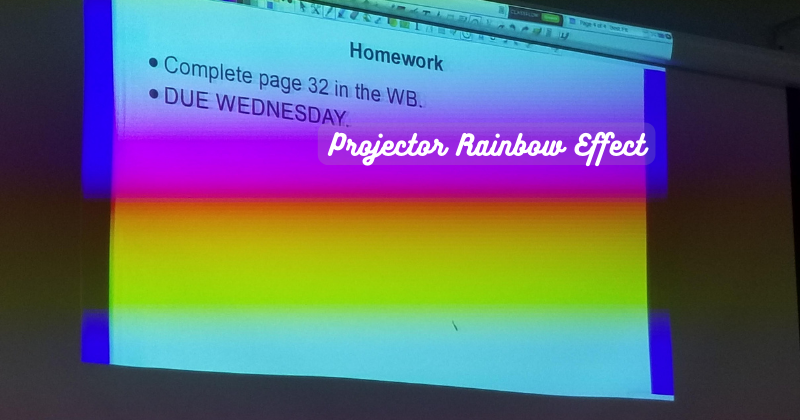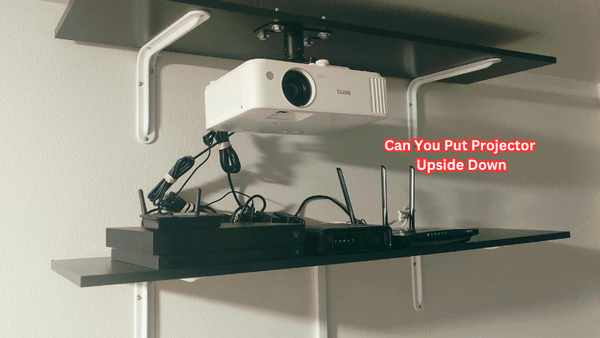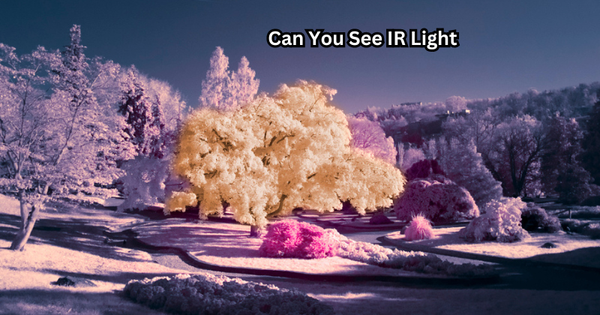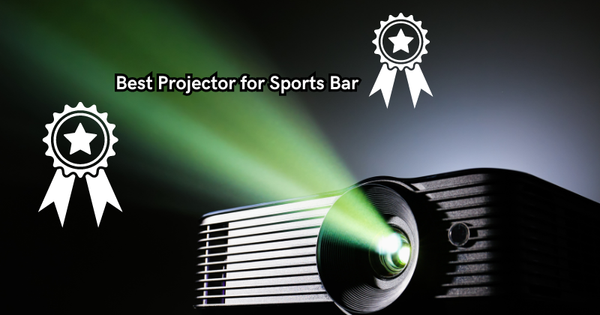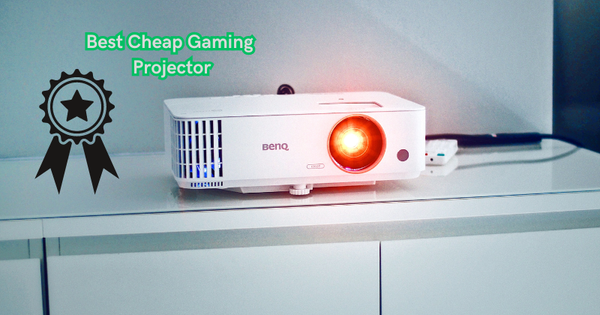The projector rainbow effect is a phenomenon that occasionally occurs during video projections, manifesting as brief, multicolored flashes of light sources, resembling a rainbow. This optical anomaly is primarily associated with single-chip DLP (Digital Light Processing) projectors.
The effect results from the rapid sequential display of red, green, and sometimes blue light as color components, which can be perceived by some viewers as momentary flashes of rainbow-like hues. While many viewers may not notice or be bothered by this phenomenon, a subset of individuals may find it distracting or discomforting.
Understanding the causes and mitigating factors of the projector rainbow effect is essential for both manufacturers and consumers to enhance the overall viewing experience and address any concerns related to visual rainbow artifacts during presentations or entertainment sessions. This guide will provide an overview of the projector rainbow effect, its potential causes, and methods to minimize its occurrence.
What Is the Rainbow Effect?
The rainbow effect, also known as the color break-up effect or sequential RGB effect, occurs due to the technology used in single-chip DLP projectors. Unlike LCD (liquid-crystal display) projectors that use three separate panels for red, green, and blue colors, DLP projectors work have a single chip with thousands of tiny mirrors that tilt towards or away from the light source to create an image rainbow like colors.
To display different colors, a color wheel with red, green, and blue filters spins rapidly in front of the chip, allowing the light to the color wheels and pass through at specific intervals. This process is known as color sequential display and results in the rapid flashing of individual RGB components on the screen. The human eye perceives these flashes as separate colors, creating the rainbow effect.
What Does The Rainbow Effect Look Like?
The appearance of the rainbow effect varies depending on the viewing conditions and individual perception. Some may see a faint hint of colors, while others may experience a more pronounced rainbow flash. The effect can manifest as isolated projected image perceives flashes primary colors or clusters of rainbows that move across the screen.
Furthermore, the intensity and frequency of the rainbow effect may also vary depending on factors such as screen brightness, color saturation, and viewing distance. In some cases, viewers may notice the effect more when their eyes are moving or focusing on a particular area of the screen.
Mostly you will see rainbow effects flash up and down on the video, maybe every 5-10 frames. Plus, this effect is more prominent on brighter objects as opposed to darker ones. These brief flashes can be distracting and cause visual discomfort for some individuals.
What Causes The Rainbow Effect?
As mentioned earlier, the rainbow effect is primarily associated with single-chip DLP projectors. While not all DLP projectors exhibit this phenomenon, it is more noticeable in lower-priced or older models.
The main cause of the rainbow effect is the color wheel's rotation speed, which can vary between different projector brands and models. If the spinning speed of the rotating color wheel itself does not match the refresh rate of the projected image, it can result in color separation and the perception of rainbows.
Other contributing factors may include the quality and condition of the color wheel, as well as individual visual sensitivity. Some viewers may be more susceptible to perceiving rainbow effects due to differences in their retina's cone cells' response time.
How Can You Minimize The Rainbow Effect?
If you are considering purchasing a DLP projector or already own one and want to minimize the rainbow effect, here are some tips you can follow:
- Consider investing in a higher-end DLP projector with a faster color wheel rotation speed.
- Adjust the screen brightness and color saturation to reduce the intensity of rainbows.
- Sit further away from the screen or try different viewing angles to reduce the visibility of the dlp rainbow effect.
- Take regular breaks to rest your eyes, especially if you are sensitive to visual anomalies.
- Upgrade to a more recent model of DLP projector that may have improved technology and reduced rainbow effect occurrence.
- If the rainbow effect is too distracting or discomforting, consider switching to an LCD projector instead.
- Lastly, ensure that the projector is clean and well-maintained, including the spinning color wheel and air filters, to avoid any potential issues or malfunctions.
How Many People Are Susceptible To The Rainbow Effect?
The susceptibility to the rainbow effect varies among individuals, and it is primarily associated with the technology used in certain projectors, specifically single-chip DLP (Digital Light Processing) models. Not everyone perceives the rainbow effect, and its visibility depends on factors such as an individual's sensitivity to color changes, the specific projector model, and the content being displayed.
Some people are more sensitive to the rapid sequential display of red, green, and sometimes blue images from color components, which can lead to the perception of momentary flashes resembling a rainbow. However, advancements in projector technology, such as higher refresh rates and improved color processing, have mitigated the rainbow effect in many modern projectors, reducing the number of people susceptible to this phenomenon.
Mistakes that can Causes the Rainbow Effect
Apart from the technical aspects and sensitivity of individuals, there are some common mistakes that can exacerbate the rainbow effect. These include:
- Using a projector with a damaged or worn-out color wheel.
- Projecting content with high contrast and rapid color changes, such as fast-paced video games or animations.
- Having high levels of ambient light in the viewing environment, which can result in washed-out images and increased visibility of the rainbow effect.
- Incorrectly setting up or calibrating the projector, such as using incorrect color profiles or failing to adjust screen brightness and contrast.
It is essential to be aware of these mistakes so that they can be avoided when using laser projectors to minimize the occurrence of the rainbow effect and ensure a better viewing experience for all viewers.
Tips for A Better Viewing Experience
In addition to avoiding potential mistakes, here are some general tips for a better viewing experience when using lcd projectors:
- Choose a projector with appropriate brightness and resolution for your specific needs.
- Consider the ambient light conditions in the viewing environment when selecting a projection screen or surface.
- Regularly clean and maintain the projector to ensure optimal performance and longevity.
- Adjust the major projector technologies settings, such as brightness and color temperature, according to the content being displayed.
- Take regular breaks to rest your eyes and minimize visual strain.
By following these tips and being aware of common mistakes that can contribute to the rainbow effect, you can ensure a better viewing experience for yourself and others when using projectors.
FAQs
Should I be concerned if I see the rainbow effect on my projector?
No, unless it is causing significant discomfort or hindering your viewing experience. The rainbow effect is a common occurrence in certain types of projectors and does not pose any harm to viewers.
Can the rainbow effect be completely eliminated?
While advancements in technology have reduced the occurrence of the rainbow effect in modern projectors, it cannot be completely eliminated in some single-chip DLP models.
Is the rainbow effect only visible on projectors?
No, while it is most commonly associated with certain types of projectors, the rainbow effect can also occur on other devices that use similar technology for color processing, such as digital cameras and smartphones.
Conclusion
The rainbow effect is a visual phenomenon that can occur on some types of projectors, causing momentary flashes white light or streaks of color. It is primarily associated with certain DLP projector models and varies in its visibility among individuals.
By following the tips mentioned above and being aware of potential mistakes that can contribute to the rainbow effect, you can minimize its occurrence and ensure a better viewing experience for yourself and others.
So, next time you're considering purchasing a DLP projector or experiencing the rainbow effect while using one, keep these factors in mind for a seamless and enjoyable viewing experience. Happy projecting!
